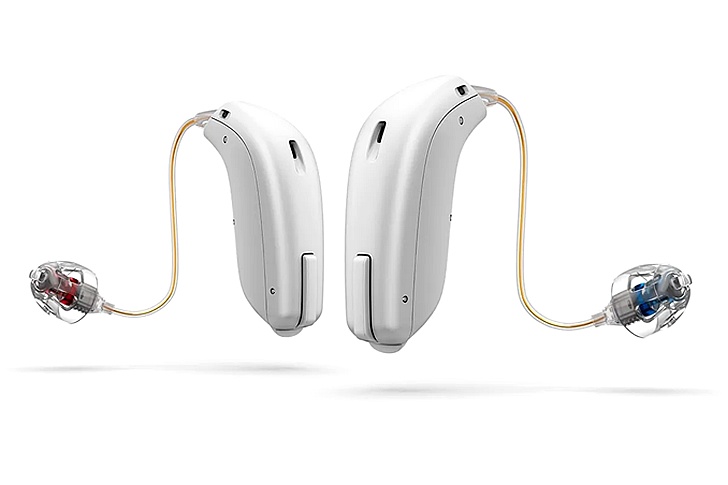Navigating Hearing Aid Choices for Seniors in 2024
Hearing aids can significantly improve the quality of life for seniors with hearing loss. This comprehensive guide explores various hearing aid options available, their features, and how to choose the best one to meet individual needs.

Understanding Hearing Loss in Seniors
Key Facts
- Prevalence: Nearly one in three people between 65 and 74 experience hearing loss, and almost half of those older than 75 have difficulty hearing.
- Impact: Hearing loss can lead to social isolation, depression, and cognitive decline if left untreated.
- Solution: Modern hearing aids offer a range of features and styles to cater to different levels of hearing loss and personal preferences.
Types of Hearing Aids
1. Behind-the-Ear (BTE)
- Description: Fits behind the ear and connects to an earpiece inside the ear canal.
- Features:
- Suitable for all types of hearing loss
- Easy to handle
- More visible than other types
2. In-the-Ear (ITE)
- Description: Fits completely inside the outer ear.
- Features:
- Suitable for mild to severe hearing loss
- Custom-molded to fit the ear
- Less visible than BTE models
3. In-the-Canal (ITC) and Completely-in-the-Canal (CIC)
- Description: Fits partially or completely in the ear canal.
- Features:
- Suitable for mild to moderate hearing loss
- Very discreet
- Smaller battery, requiring more frequent changes
4. Receiver-in-Canal (RIC) or Receiver-in-the-Ear (RITE)
- Description: Similar to BTE but with the receiver or speaker in the ear canal.
- Features:
- Suitable for mild to severe hearing loss
- Smaller and less visible than BTE
- Good sound quality
5. Invisible-in-Canal (IIC)
- Description: Fits deep in the ear canal.
- Features:
- Suitable for mild to moderate hearing loss
- Nearly invisible
- Requires good dexterity for handling
Features to Consider
Table 1: Key Features of Hearing Aids
| Feature | Description |
|---|---|
| Noise Reduction | Reduces background noise for clearer sound |
| Directional Microphones | Enhances sound from specific directions |
| Rechargeable Batteries | Convenient and eco-friendly |
| Bluetooth Connectivity | Connects to smartphones and other devices |
| Telecoil | Improves sound quality on telephones |
| Automatic Programming | Adjusts settings based on the environment |
Cost of Hearing Aids
Table 2: Average Costs of Hearing Aids by Type
| Type | Price Range |
|---|---|
| Behind-the-Ear (BTE) | $1,500 – $3,000 |
| In-the-Ear (ITE) | $1,200 – $2,800 |
| In-the-Canal (ITC) | $1,200 – $2,700 |
| Receiver-in-Canal (RIC) | $1,500 – $3,200 |
| Invisible-in-Canal (IIC) | $1,800 – $3,500 |
How to Choose the Right Hearing Aid
Steps to Take
- Get a Hearing Test:
- Visit an audiologist for a comprehensive hearing evaluation.
- Determine Your Needs:
- Consider your lifestyle, the severity of hearing loss, and personal preferences.
- Evaluate Features:
- Decide which features are most important to you (e.g., Bluetooth, noise reduction).
- Try Different Models:
- Many providers offer trial periods to test different hearing aids.
- Check for Insurance Coverage:
- Some insurance plans cover part of the cost of hearing aids.
Frequently Asked Questions (FAQ)
Q: How often do hearing aids need to be replaced?
A: On average, hearing aids last between 3 to 7 years, depending on the model and maintenance.
Q: Are there any financial assistance programs for hearing aids?
A: Yes, various programs such as Medicaid, VA benefits, and non-profit organizations can help cover costs.
Q: How do I maintain my hearing aids?
A: Regular cleaning, battery replacement, and periodic check-ups with an audiologist are essential.
Additional Resources
Programs for Financial Assistance
- Medicaid: Covers hearing aids in some states.
- Veterans Affairs (VA): Provides hearing aids for eligible veterans.
- Non-Profits: Organizations like the Hearing Loss Association of America (HLAA) offer resources and support.
Best Hearing Aid for Seniors in 2024




Conclusion
Selecting the right hearing aid involves understanding the types available, evaluating essential features, and considering costs. With various options tailored to different needs and budgets, seniors can find effective solutions to improve their hearing and quality of life.
Citations







Recent Comments